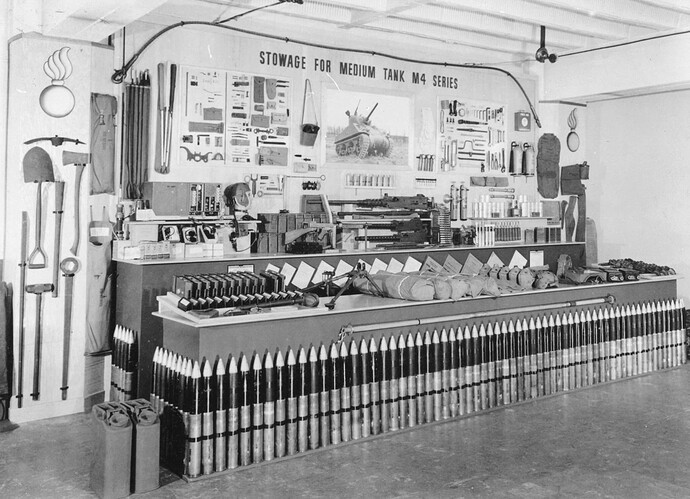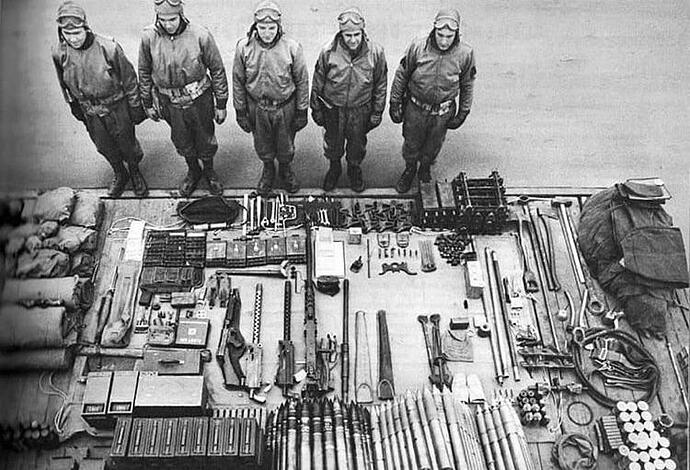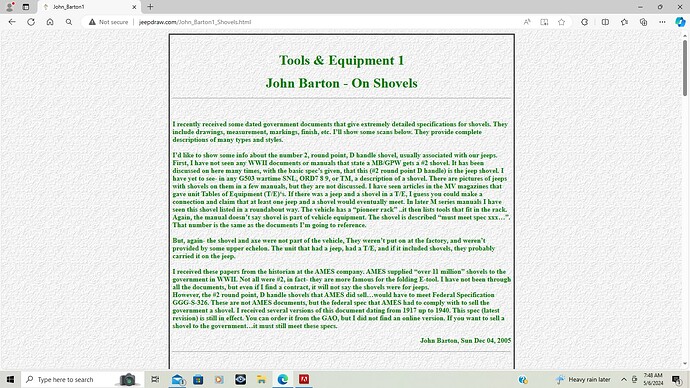That guy, or the audience he is addressing, really does not seem to understand how government procurement worked, otherwise he would not be so surprised or declarative that there were no “jeep” shovels or that government specifications for hardware and tools were often based on existing items rather than created from a blank sheet of paper.
He says, “I have yet to see- in any G503 wartime SNL, ORD7 8 9, or TM, a description of a shovel.” but here’s a snip of TM 9-803 from February 1944:
When specifications are cited in contracts, it is merely necessary to provide the specification and any qualifiers that specification requires to get the desired item. A description is not needed in contracts, let alone in technical manuals or SNLs where users work with part or stock numbers that have already been assigned. To put it bluntly, the vehicle operator doesn’t need to know a full description of the tool because he has all he needs to order one.
Nevertheless, many TMs include tool descriptions, if they do not cite a specification or drawing, they invariably use a description that is aligned with those in the applicable Federal tool specifications of the time. Thus, it is generally quite easy to determine what a “standard” shovel or ax was. I’m not as familiar with QMC-procured material like trucks before 1943, but I believe the QMC had their own catalog of standard tools. I have no doubt that the contracts for the design of the 1/4-ton 4X4 included either a reference to that catalog or to a Federal specification.
I have many of these specifications, covering shovels, axes, pick mattocks, mattock handles, and pry bars. Many of them were hastily modified during the war to expedite production or to modify requirements, often by issuing an edited version under a new designation, which is what I suspect 41-A-1277 and 41-S-3170 are. (Incidentally the 41 in the designation is not the year of issue but the group identifier of the items covered by the specification, i.e Class 41, Hand Tools.). A case in point is that in the main Federal Specifications wooden handles were and aren’t painted, for two reasons. First, paint can be used to hide rejectable defects in the wood and second, paint can cause blisters when the the tools are used with bare hands while waxed or oiled finishes won’t. Nevertheless, hand tools with painted handles are well-known and they were certainly procured by the US Army, so something changed.
KL





